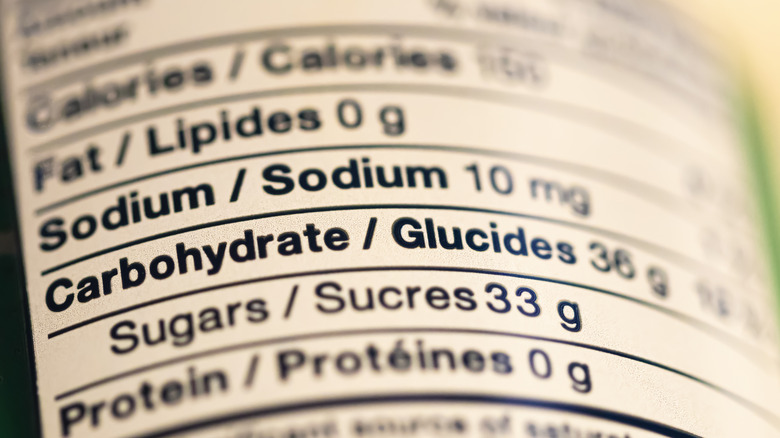The Slightly Deceptive Way Oil Spray Can Get A 'Fat-Free' Label
In 1957, the entrepreneurial pair of Arthur Meyerhoff, Sr. and Leon Rubin patented a new kitchen staple: the first non-stick cooking spray. In a bout of a not-so-creative genius, they named it 'Product of Arthur Meyerhoff,' better known by the acronym PAM. It's now become a proprietary eponym much like Band-Aid and Kleenex, and even if you don't have a can of PAM in your pantry, you almost certainly have a store-brand equivalent. Cooking sprays like PAM are incredibly convenient products with more uses than you might think, but their marketing mostly focuses on one aspect: comparisons to oil and butter.
PAM was pitched as a substitute for sautéing food in oil or butter. This proved to be a profitable reputation in the late 20th century when Americans went on an anti-fat crusade. Research from the '70s pointed to fat as the greatest threat to our health, and soon the words 'fat free' were the most powerful thing you could put on a label. The problem is, while 'fat makes you fat' sounds like an easy answer, it's actually a dangerous oversimplification of nutrition. At the same time that Americans shunned fat, they ate more simple carbs and sugars, and during the whole fat-free craze, obesity and diabetes actually became more common. NPR notes that 21st-century studies have shown no link between low-fat diets and weight loss or disease, and yet 'fat-free' products remain appealing to customers. The thing is, they're not what they say they are.
Oil is fat
There is no such thing as fat-free oil. It's like saying 'sodium-free salt' or 'lactose-free dairy' — an oxymoron. We talk about oils and fats like they're two separate things, but this isn't the case. Broadly speaking, we differentiate fats and oils based on their material states at room temperature. Oils are liquid while fats are solid. Furthermore, oils typically come from plants or fish while fats come from land animals. The deceptively-named coconut oil, prone to solidifying, is the notable exception. Despite these contrasts, fats and oils have the same chemical structure: three strands of fatty acid molecules bound with a glycerol molecule.
There's one distinction between oils and fats that actually does have an impact on our health, but as you'll see, it doesn't always hold true. Oils tend to contain more unsaturated fats, which are the so-called 'healthy fats' you find in avocado, canola, olive, and fish oil, among others. Solid fats contain higher levels of saturated fats, which can raise your cholesterol levels and lead to heart disease. The reason coconut oil doesn't fit in with other plant-based oils is that it's full of saturated fat. Most of the stuff in a can of cooking spray is oil (there are also emulsifiers, anti-foaming agents, and gas propellants). It's usually a plant-based oil that's heavy in unsaturated fats, but even the good fats are packed with calories, around 120 per tablespoon. Besides, good fat is still fat, so what's with the 'fat-free' label?
Food labels are deceptive
Cooking spray brands get away with their fat-free claims by manipulating nutrition labels. FDA regulations state that as long as your product contains less than 0.5 grams of fat per serving, you can legally label it 'fat-free.' The obvious issue here is that the 0.5 gram rule applies regardless of the size of each serving. Theoretically, you could sell 0.4 grams of straight lard and call it 'fat-free.' This loophole is the reason that 'fat-free oil' can exist while seemingly violating the laws of reality.
PAM's nutrition label says it contains 0.0% fat, 0.0% cholesterol, and 0 calories. It sounds incredible, until you realize that the serving size is 0.25 grams. It's impossible to have 0.5 grams of fat in 0.25 grams of product, so just like that, PAM becomes 'fat-free.' Of course, once you exceed 0.5 grams of cooking oil, it's almost all fat. In order to actually stick to the serving size listed by most oil sprays, you'd need to spray for no more than a quarter of a second, which is a wildly unrealistic expectation. So, don't be fooled by any oil that claims to be fat-free — they're selling you a dream. If you really want to avoid fats, look for labels that say '100% fat-free' which the FDA defines by fat-per-gram rather than fat-per-serving.


